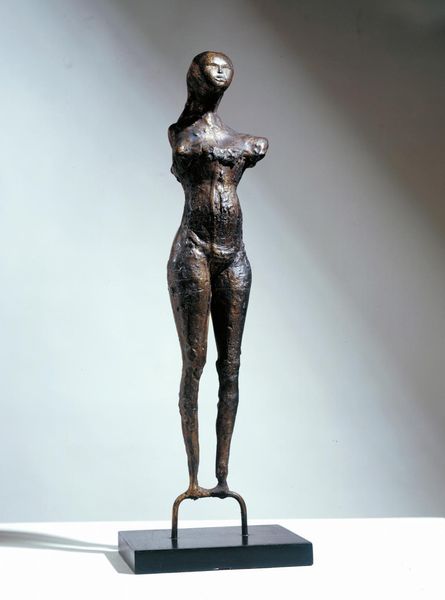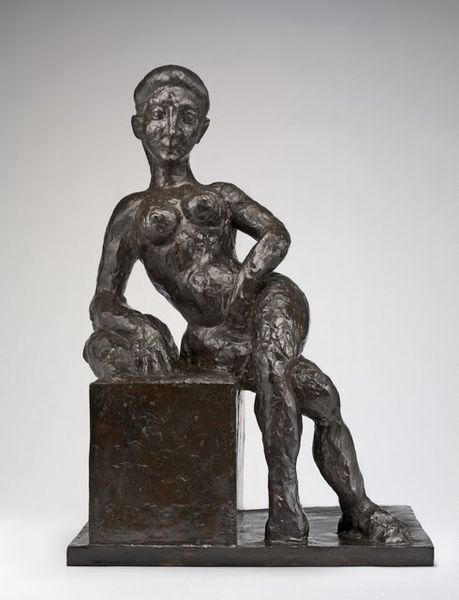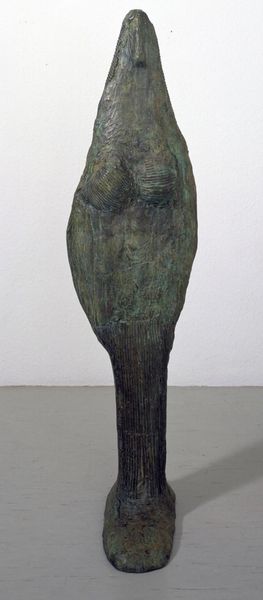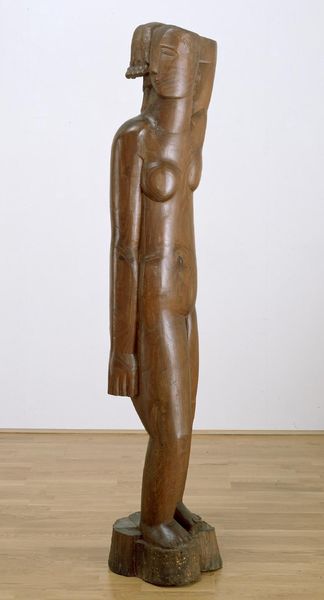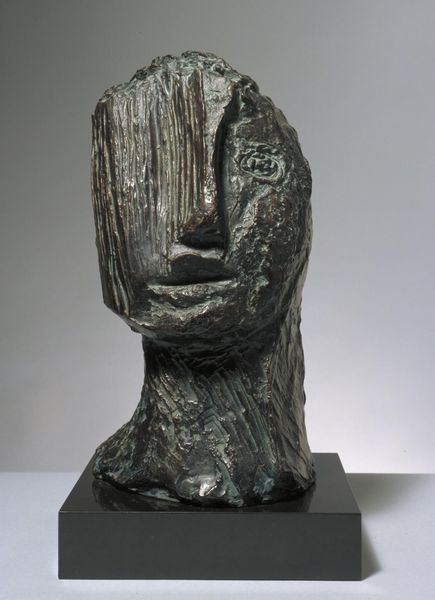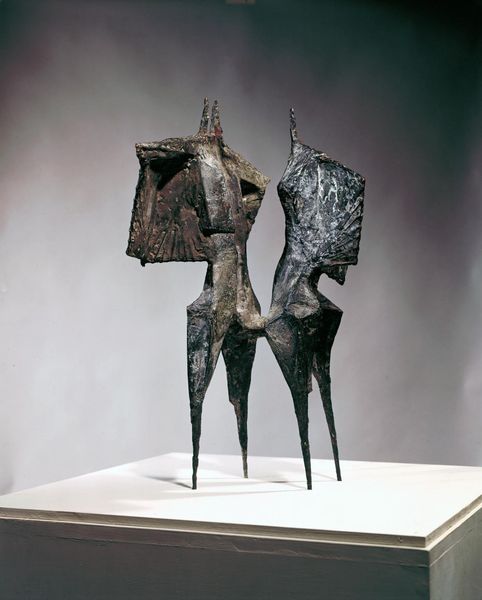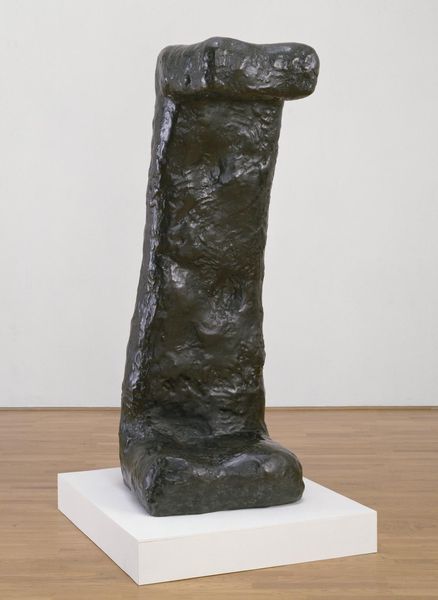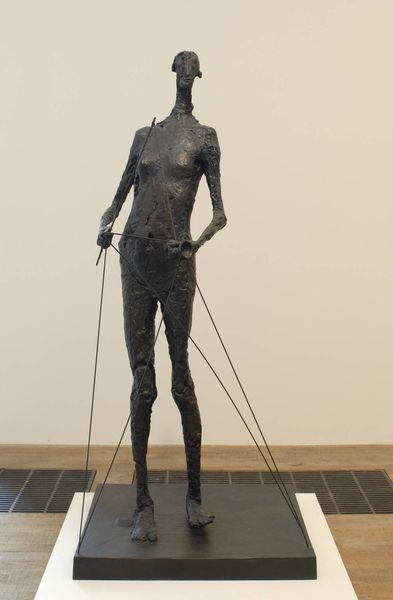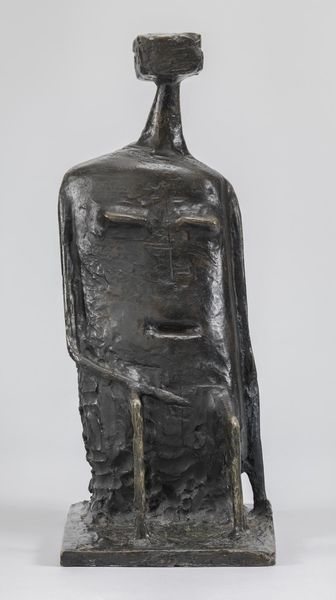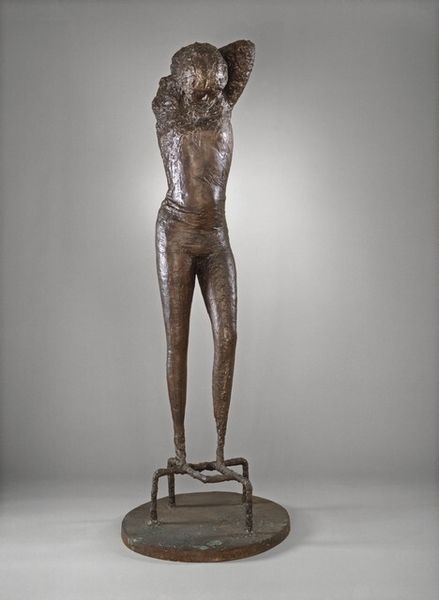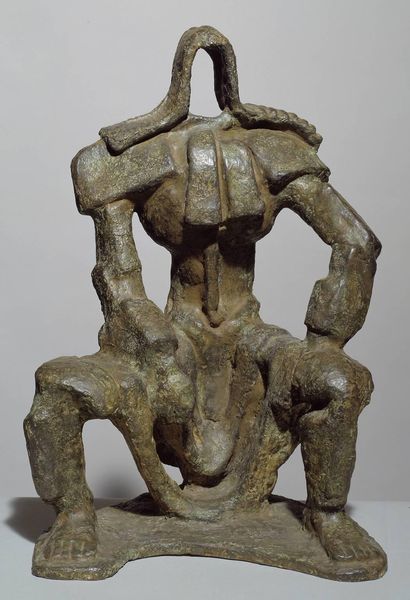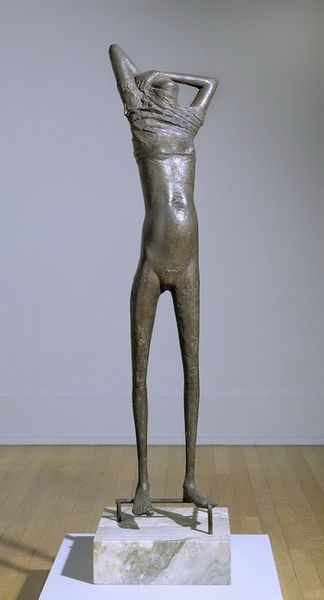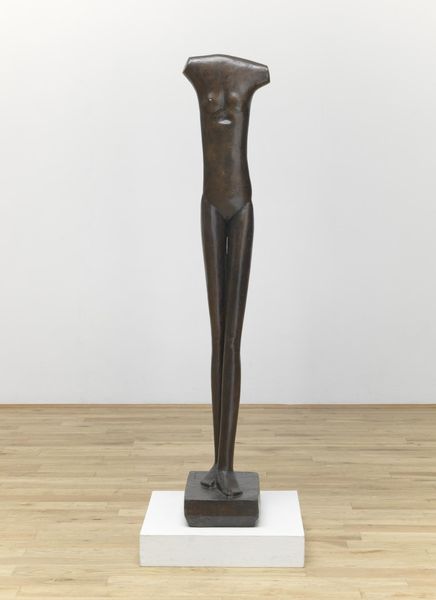
bronze, sculpture
#
abstract-expressionism
#
sculpture
#
bronze
#
figuration
#
sculpture
Copyright: Germaine Richier,Fair Use
Curator: This is Germaine Richier's "Water," created in 1954. Richier was a prominent French sculptor, known for her work during the post-war period. Editor: Immediately, it evokes a sense of something primal, even unsettling. The rough texture of the bronze and the almost skeletal figure—it's like an excavated artifact. Curator: Indeed. The title "Water" might seem counterintuitive given the rough materiality. However, in the context of post-war Europe, water could symbolize purification and rebirth but also reflect a fear of rising water levels caused by climate change. What were her intentions when it came to depicting the human figure, do you think? Editor: To me, it’s all about process and material transformation. The casting seems deliberately rough, emphasizing the mold and the hand of the artist. This aligns it with other kinds of object-making. Does it truly belong on display like some venerated totem, untouched? It appears so delicate it seems that it belongs with raw materials in a workshop! Curator: Fair point. The roughness connects her with the Existentialist anxieties of the time. There’s a certain vulnerability, emphasized by the abstracted form. What makes this sculpture distinct is how she navigates through traditions of sculpture, but it looks both very avant-garde and contemporary to my eye. Editor: Right, that rawness suggests a departure from idealized forms and also underscores her awareness of the processes used to produce such a refined look. It forces you to consider the bronze itself, not just the shape. It makes the act of consumption much more interesting than you might otherwise assume. Curator: Certainly. "Water," and other works of its era, serves as a powerful marker of post-war consciousness, both reflecting and questioning society's perception of the human form in distress. Editor: Absolutely, seeing this piece made me think not just about its message, but how it communicates it through its form and process. How can these bronze tools or practices be relevant for future artwork? Curator: I agree that considering the role and impact this particular form played in reshaping art can enhance our appreciation for art's continued place in society.
Comments
No comments
Be the first to comment and join the conversation on the ultimate creative platform.
